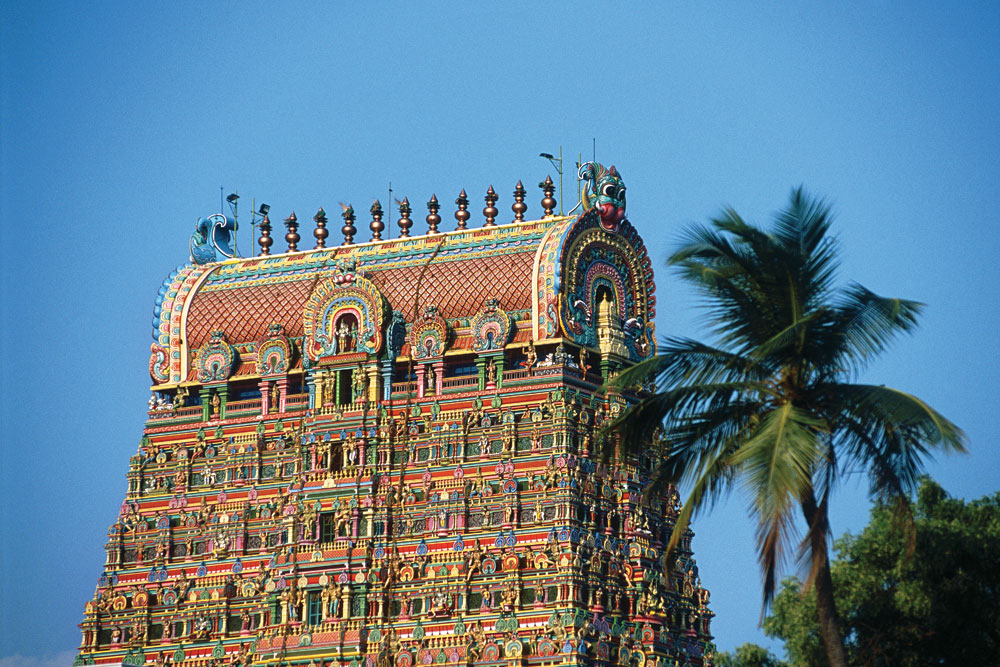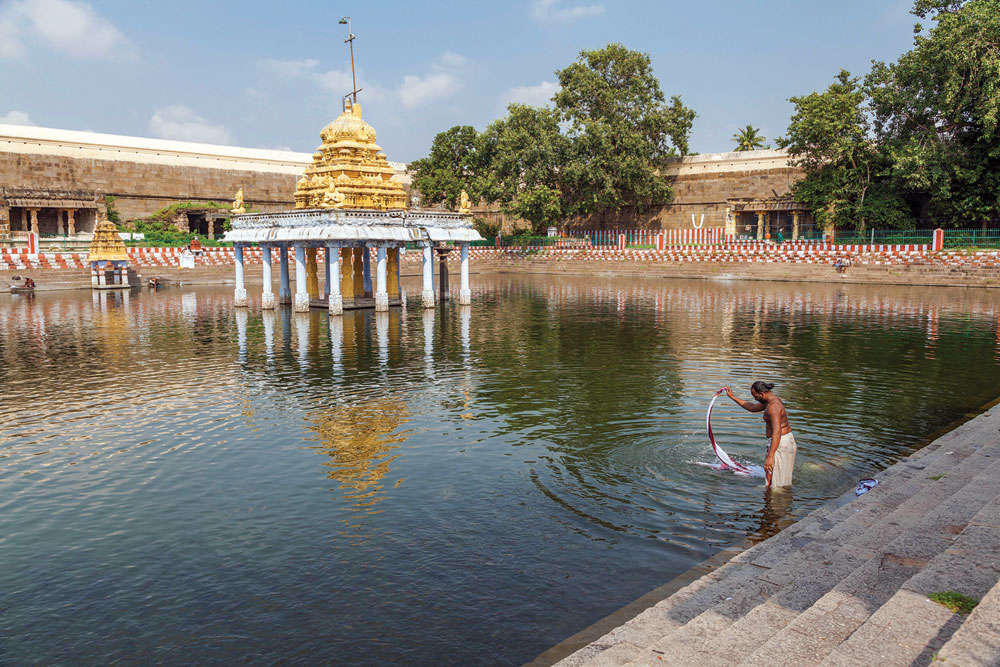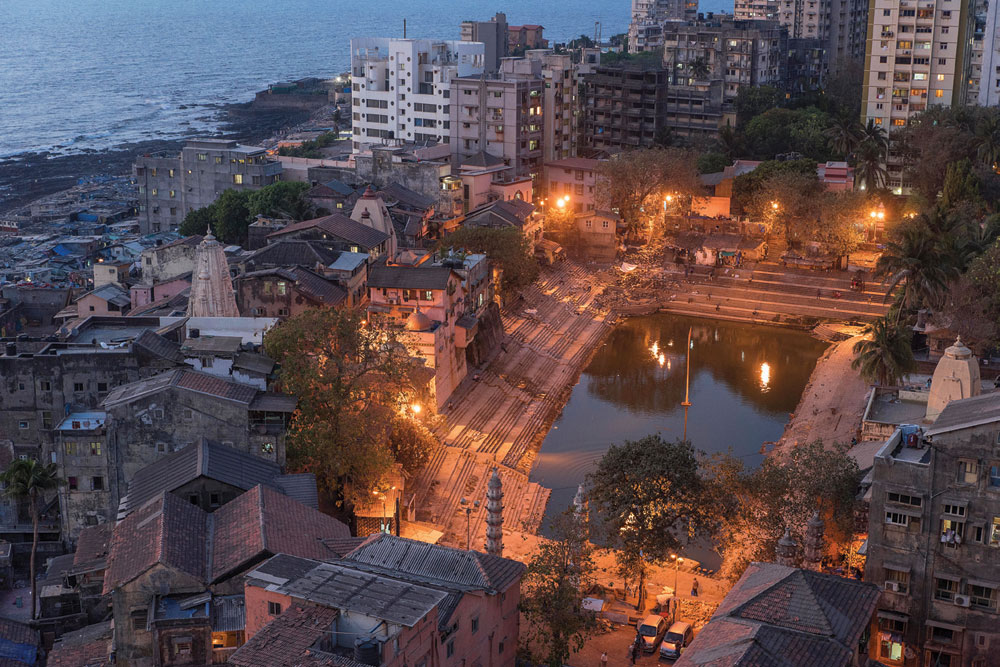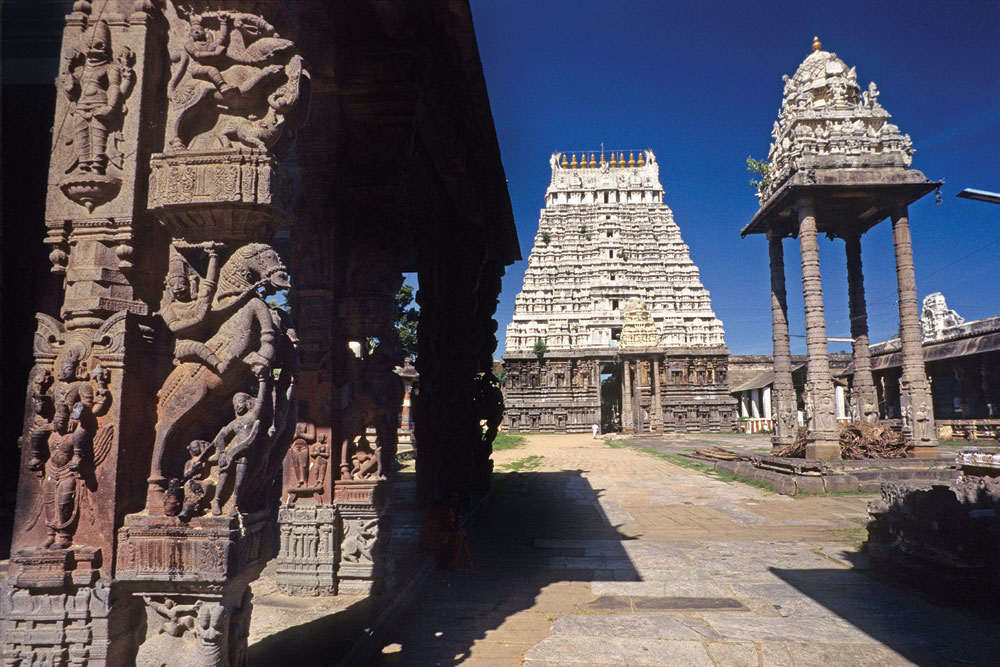The Other Kashis
From Mumbai to Tamil Nadu to the Himalayas, soaking in the numerous avatars of the spiritual heart of India
 Priyanka Dalal
Priyanka Dalal
 Priyanka Dalal
Priyanka Dalal
 |
06 May, 2022
|
06 May, 2022
/wp-content/uploads/2022/05/Otherkashis1.jpg)
Gangotri in Uttarkashi district of Uttarakhand (Photo: Alamy)
THE FIRST TIME I WENT TO KASHI WAS BECAUSE OF A PARTICULARLY SOULFUL rendition of the Kaalbhairav Ashtakam bhajan. I had chanced upon it and found myself listening to it on loop. Kaal Bhairava is the guardian deity of Kashi, and the hymn made me curious. When I eventually went to Kashi and reached his temple, it had a long queue of mostly local men waiting to enter. After standing amidst them in the September heat, I managed to get inside. I was expecting the spiritual sentiment that a spacious, ancient temple would offer. What I found were tantriks clad in black gowns and bandannas sitting around the main shrine with hand fans made of peacock feathers. Devotees would go, bow down to them and receive a thwack from the fans. The black dog is the pet of Kaal Bhairava and yet, the black temple dog roaming around was scrawny, injured and looking in need of divine assistance. The aarti had just finished, there was incense smoke everywhere which made it hotter. In different circumstances, I love the aarti but here it all seemed dissonant. All across the city, I had the same sense of too much to take in. Glorious temples, constantly burning funeral pyres, yogis, charlatans, saffron-clad beggars, devotional joy, prosperity, filth, pollution and abject poverty—all co-existing in close proximity within the narrow maze-like lanes criss-crossing the ancient ghat area—overwhelming was an understatement for my first visit to Kashi. I still tried to gather in all I could in a few days. I went to an offbeat Nepali temple, an ancient bungalow with a terrace full of astronomical constructions like a mini Jantar Mantar of Jaipur, saw aghoris in Harishchandra ghat, jostled into Kashi Vishwanath temple, visited the Manikarnika ghat, saw the Ganga aarti and more. “Hold your flower offering tray tightly, sometimes monkeys swoop in to grab them,” said someone when I was in a temple line.
That three-day visit got me even more interested about Kashi. I have slowly realised that it is an ocean of diversity. And that Kashi was also an idea, and the idea was all over India. When I first heard about some places in Mumbai named as “Kashi”, I dismissed them altogether. Nothing could compare, I thought. Soon, a weekend photo walk brought me to Banganga. Until then little had I known that just a stone’s throw from my South Mumbai house, walking down a flight of stairs could transport me from the bustle of a metropolis to a land of bathing kunds, ancient temples, rituals, crematoriums and hidden graveyards. The Banganga tank is a serene waterbody, a part of the ancient Valukeshwar Mahadev temple, which gives the area its name of Walkeshwar. Many other temples and religious establishments can be found surrounding the tank. One of these is the Goud Saraswat Brahmin Kashi Math. On an ensuing visit, as I got a personal tour of this temple thanks to a friend who is part of the temple management, she told me, “The moon was in its fifth waxing phase, in the Indian month of Shravan. The date as per the Gregorian calendar was August 1, 1775. The seventh head of the Kashi Math of the Goud Saraswat Brahmin community— Shrimath Madhavendra Tirth—sat in meditation and asked our sangha to create a samadhi structure around him; 244 years later, this samadhi is still here in this Kashi Math of Banganga— dedicatedly visited and worshipped all these years.”

Just around the corner is the Banganga crematorium, which will always be a very special place for me because this is where my grandfather was cremated. I was the only woman in the funeral party along with all the male relatives and I was right next to my older brother when he lit the wooden pyre. The next few hours we all sat there watching the pyre burn and through the smoky haze we could see the wide expanse of placid waters of the Arabian Sea stretching into the far-off horizon. Slowly, a serenity settled on all of us. When we left the crematorium, I could feel in the light camaraderie and banter taking place and that all of us felt very light and peaceful within.
A three-day visit got me even more interested about Kashi. I have slowly realised that it is an ocean of diversity. And that Kashi was also an idea, and the idea was all over India
I had experienced the same serenity amidst death and grief at Manikarnika ghat in Kashi. Sitting by the ghat, seeing the constant flow of dead bodies, burning fires and stacks of wood, there is a circle-of-life feel to it. We shift from thinking about existence without our loved ones to the larger question of birth and death. All of a sudden, the moniker of Kashi of Mumbai given to Banganga did not surprise me at all.
But Bhuleshwar, a 15-minute drive away, is also known as the Kashi of Mumbai. It was an area I had never been interested in because of the crowds. However, I found it home to hundreds of temples and shrines. It even had a Kashi Vishwanath temple. On multiple visits, I have discovered how much there was to explore amidst that throng—temples, flower markets, Mumbai’s largest animal shelter and its only sun temple. Banganga is serene and Bhuleshwar is chaotic, and Kashi too is both and it is everywhere.
I first visited Uttarkashi, which literally means northern Kashi, as part of a char dham pilgrimage group. En route Gangotri, we took a halt there for its renowned Kashi Vishwanath temple, which houses a prominent devi shrine with a 19.5-foot-long metal trident rising from the earth. This ancient relic has a unique lesson to teach all visitors as the pujari told me, “If anyone tries to move it with a lot of force, it won’t budge. But a gentle touch will get it moving. It is symbolic of cultivating gentleness, an important quality on our spiritual journey.” Like Kashi, Uttarkashi is located on the banks of a river, Bhagirathi, the source tributary that later becomes Ganga. Uncovering its many layers of ashrams and temples takes effort because cheap lodgings and eateries pack the main road of Uttarkashi catering to the daily travellers going to Gangotri dham or the many popular hiking destinations like Dayara Bugyal and Kedarkantha summit. I got my chance of meandering through the smaller lanes on my second visit. One of my most memorable discoveries was the Anandmayee ashram tucked away in a corner near the Ganga ghat with its bright red walls. A striking red-coloured Kali temple adorns the courtyard. Around it are sparse accommodations available for monks, caretakers and visitors. I sat for a while chatting with the monk ordained by Anandmayee Maa herself and sipping sweet chai.

On the other char dham route that goes towards Kedarnath, lies another Kashi. This one is called Guptkashi or the secret Kashi. Among certain spiritual groups, its Kashi Vishwanath temple is considered having great power and is a mandatory stop on the Kedarnath pilgrimage. Thus, with meditators of such a group, I had found myself here, a quaint and less known corner of the Himalayas. It offered us, the weary travellers after many kilometres of mountain roads, an ancient temple with a refreshing Manikarnika kund outside it. To its side is another Shiva temple in his ardhanarishwar (half man, half woman) form. We meditated in the peaceful courtyard, dipped our feet in the kund and bowed down to the deities. This is a relatively smaller temple complex and maybe that’s what keeps it a secret.
Both Uttarkashi and Guptkashi are at lower altitudes than the other Himalayan pilgrimage spots. In winter, many sages and yogis come down from the higher reaches of the mountain and stay here with their followers to continue their austerities at slightly more comfortable temperatures. Conversely, these could also be lovely travel choices during summer when the Kashi of the plains becomes unreasonably hot.

The other Kashis are not just in North India, the South too has its share. One name that pops up often is Kanchipuram, or simply Kanchi, known as the “city of 1,000 temples”. I was on a cycling trip alone from Chennai to Tiruvannamalai. Kanchipuram was my rest (and exploration) day. After cycling the entire day on empty countryside roads, I rode into the city late afternoon and was greeted with the main road packed inch to inch with vehicles and public all moving in whichever direction that allowed them to make some progress forward. My cycle helmet was a source of amusement to the locals because not a single head in that sea of two-wheelers jammed everywhere had any protective gear on it. I could not conjure up a Kashi here at this point of my visit.
However, after settling into my hotel and preparing myself mentally, as I strolled the still crowded streets I was soon able to spy the many temples, mutts and peethams all around. Soon, the nearby towering gopuram drew my sight and once I entered the large and spacious Ekambareswarar Shiva temple, I felt the touch of the space. I meandered through the 1000-pillared hall, seeing the intricately carved pillars and shrines like the sahasralinga that have 1,000 miniature lingas carved together. I sat by a mango tree under which Parvati is said to have done strict penance for Shiva. The tree’s age, they believe, is 3,500 years.

Kanchipuram is so packed with ancient temples that one needs a method to cover them in a short amount of time. I went with online recommendations and an instinct to visit the Varadharaja Perumal temple, also one of the biggest in Kanchi, the Ulagalanda Perumal temple, which is smaller but quaint, and the Kamakshi Amman Devi temple. As I explored their magnificent architecture, found out historic stories, deciphered the myriad pillar carvings, watched the fervour of the devotees and the idols bathed in the soft glow of oil lamps, I soon felt the strings of Kashi strumming in my heart.
On multiple visits to Bhuleshwar, I have discovered how much there was to explore amidst that throng—temples, flower markets, Mumbai’s largest animal shelter and its only sun temple. Banganga is serene and Bhuleshwar is chaotic, and Kashi too is both and it is everywhere
Nanjangud near Mysore is also known as a Kashi of the south, and when I first stood outside I thought to myself, “But this is only one temple complex.” I soon found out that Srikanteshwara is one of the biggest temples in Karnataka, over 1,000-years-old. Devotees believe it to have healing properties. There was a huge sitting Shiva statue outside and those were still the days when Statue of Unity, Adiyogi and other super tall statues hadn’t been unveiled in India. There were also over 100 smaller shrines in the temple complex. I realised that the Kashi label to any place is given for different reasons. Guptkashi had only one temple complex that I know of, however it is so acclaimed because of how certain yogic lineages perceive the deity’s power. Here in Nanjangud, across the breadth of India, was another single temple complex, but so different and still called Kashi by another set of people.
Tenkasi in Tamil Nadu too translates to southern Kashi and also has a Kashi Vishwanath temple. There must be so many others too that I am still unaware of but I hope to keep finding them even though modernity is leaving an imprint on each of them, just as in Kashi itself. What will be their future? Will mindless development continue unabated and hack away at their spiritual core? Or will we be able to find a balance, cherish and sustain them? I hope so, if only for the rhythm of Kashi to continue playing in my heart.
About The Author
MOst Popular
3

/wp-content/uploads/2025/07/Cover_Crashcause.jpg)












More Columns
Bihar: On the Road to Progress Open Avenues
The Bihar Model: Balancing Governance, Growth and Inclusion Open Avenues
Caution: Contents May Be Delicious V Shoba